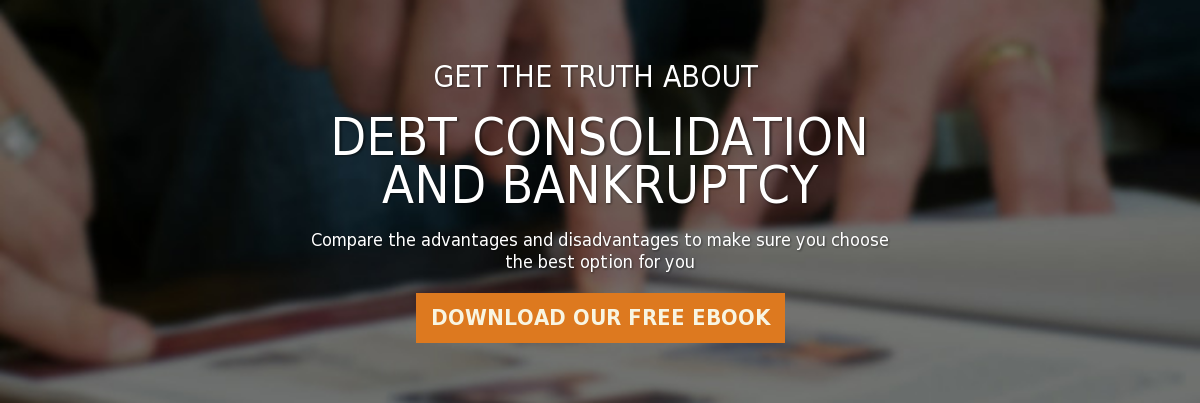 Chapter 7 bankruptcies are known as the “Liquidation” chapter of bankruptcies. That doesn’t mean the judge is going to pull up in front of your house with a moving truck, load up your stuff, and drive away. Instead, it means the court labels your property as either “exempt” or “non-exempt” based on either federal or state laws. Your non-exempt property can either be: 1) surrendered to your Chapter 7 trustee, 2) “purchased” from your bankruptcy estate, 3) or abandoned by the Chapter 7 trustee. Here, I will first discuss the differences between exempt and non-exempt property. Then, I will discuss the three non-exempt property options.
Chapter 7 bankruptcies are known as the “Liquidation” chapter of bankruptcies. That doesn’t mean the judge is going to pull up in front of your house with a moving truck, load up your stuff, and drive away. Instead, it means the court labels your property as either “exempt” or “non-exempt” based on either federal or state laws. Your non-exempt property can either be: 1) surrendered to your Chapter 7 trustee, 2) “purchased” from your bankruptcy estate, 3) or abandoned by the Chapter 7 trustee. Here, I will first discuss the differences between exempt and non-exempt property. Then, I will discuss the three non-exempt property options.
Exempt v. Non-Exempt
In a Minnesota Chapter 7 bankruptcy, you can either protect your assets under federal law or Minnesota law. There are several factors to consider in choosing which set of laws to use, but the main deciding factor is whether you have over $24,000 in equity in your homestead. If you don’t own a home or you have less than $24,000 in equity in your home, you will likely use federal bankruptcy laws. If you have more than $24,000 in equity in your home, you will likely use Minnesota bankruptcy laws.
Summary of Most Common Federal Bankruptcy Exemptions (per debtor):
- $23,675 equity in a homestead
- $3,775 equity in a motor vehicle
- $12,625 clothing, household goods, furnishings, electronics, animals, appliances (up to $600 per item)
- $1,600 jewelry
- 401k, IRA, pension
- Public benefits
- $2,375 tools of the trade
- $1,250 (plus up to $11,850 in unused homestead exemption) for any property (WILD CARD)
Summary of Most Common Minnesota Bankruptcy Exemptions (per debtor):
- $390,000 equity in a homestead (cannot be doubled for joint filers)
- $4,600 equity in a motor vehicle
- $10,350 clothing, household goods, furnishings, watches, some electronics, appliances
- $2,817 wedding bands, books, burial plots
- 75% wages earned
- 401k, IRA, pension
- Public benefits
- $11,500 tools of the trade
(Note: there are more exemptions than those listed above. Consult with your bankruptcy attorney to learn whether you have any non-exempt property.)
Anything you own that doesn’t fit into the federal or state exemptions are considered non-exempt. Here is a summary of your options in dealing with non-exempt property.
What happens to my non-exempt property in a Chapter 7 bankruptcy?
1. Surrender
The most obvious option for your non-exempt property is surrendering it to your Chapter 7 bankruptcy trustee. The trustee will sell the property and use the proceeds to pay back your creditors. This is a great option for people if they don’t have the means to pay for the non-exempt property or they don’t mind living without it.
2. Purchase
Your non-exempt property becomes the property of your bankruptcy estate as soon as you file. If you want to keep the non-exempt property, you can “buy it” back from your estate. The amount you pay your Chapter 7 trustee to purchase your property is used to pay back your creditors. This is a great option for people that can afford to keep their non-exempt property or if they can’t live without it.
3. Abandonment
There is always the possibility that your Chapter 7 trustee doesn’t want your non-exempt property because it isn’t worth anything or it would cost too much to sell it. The Chapter 7 trustee’s job is to protect your creditors’ rights to be paid for your non-exempt assets. In recovering and selling your non-exempt property, the trustee incurs costs and fees. If It would cost too much to recover and resell your property, or your property’s fair market value is too low, the trustee may abandon the property and you get to keep it free of charge.
The above options are for Chapter 7 bankruptcies. Ask your bankruptcy attorney about how a Chapter 13 bankruptcy could protect all of your property.



